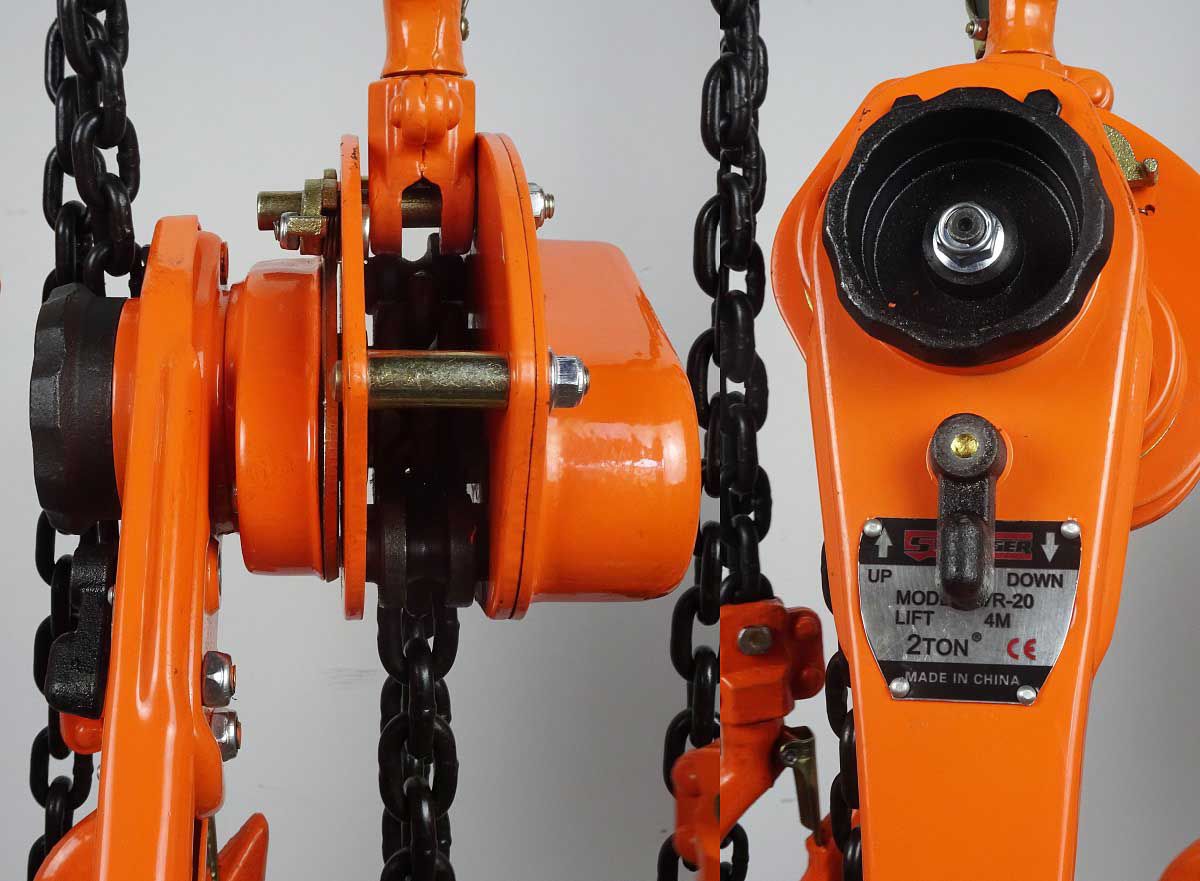Chain blocks
Basic Understanding of Chain blocks and Guidelines for Effective Use
In many production and assembly environments, there are heavy materials or equipment that human strength alone cannot move safely. In such cases, a chain blocks is considered a suitable mechanical solution, helping to lift and position loads in a more stable way.
What exactly is a chain blocks, how does it work, and in which situations is it specifically applied? The following article will analyze and clarify these aspects.
What is a Chain blocks?
A chain blocks is widely used in workshops, construction sites, and installation areas. This device replaces human effort when lifting or moving heavy loads, allowing the work to proceed in a safer and more controlled manner.

Its operating principle is based on the force transmission mechanism of pulleys combined with gears. Operators can control it either by pulling a hand chain (manual chain blocks) or by using an electric motor (electric chain blocks), depending on the scale and specific requirements.
Basic Structure
- A chain blocks is typically assembled from several mechanical components that work together to form a stable lifting system:
- Load chain: directly connects to the object being lifted and bears the entire load during operation.
- Brake system: designed to operate automatically, locking the load immediately when pulling stops to prevent slipping or falling.
- Top hook: secures the hoist to a beam or support structure.
- Worm gear and hand wheel: convert manual or motor-driven motion into lifting force while maintaining balance.
- Shaft and driving sprocket: ensure smooth operation and reliable power transmission between components.
- Endless hand chain: the part operated directly by the user to generate motion for the mechanism.
- Bottom hook: located at the lower end, used to attach the object to be lifted.
Basic Guidelines for Using a Chain blocks
Step 1. Pre-use inspection
Place the hoist in a secure position within the rated load limit.
Check the hooks, load chain, brake, gears, etc., for any damage or deformation.
Ensure the top hook is firmly attached to the anchor point.
Step 2. Mounting the hoist
Attach the top hook to a support beam, trolley, or hoist frame.
Make sure the hook hangs vertically without tilting.
Step 3. Attaching the load
Use the bottom hook to attach the load.
Ensure the load is secured at a balanced point, without twisting the chain.
Verify the safety latch on the hook is locked.
Step 4. Lifting and lowering
Pull the hand chain (control chain) to lift: one direction lifts, the other lowers.
Pull smoothly, without jerking or side pulling.
Stop once the load reaches the desired height.
Step 5. Moving and lowering the load
If movement is required, ensure the path is clear and safe.
Lower the load slowly by pulling the hand chain in the opposite direction.
Place the load on a flat, stable surface.
Step 6. Finishing the operation
Detach the load from the bottom hook.
Gather the chains, check the hoist, and store it in a dry location.
Applications of Manual Chain blocks
During construction or machinery maintenance, operators often need to handle equipment that is too heavy to lift or hold in position by hand. In such cases, a manual chain blocks becomes a practical choice. With just one person’s effort, the device can lift loads of up to 5 tons with ease.
Thanks to its compact design, a manual chain blocks is convenient to carry and use across various construction sites and manufacturing workshops.
Product Reference at EMIN
At EMIN, several popular manual chain blocks models are available:
MAX MX2 Manual Chain blocks (2 tons), test load 3 tons, 3 m chain length, suitable for medium and small-scale installation tasks.
Nitto HSH-9T Lever Chain blocks (9 tons), lifting radius up to 1.5 m, ideal for heavy-duty operations that require large lifting capacity without electric equipment.
See more models at: EMIN Chain Hoist Catalog
-
-
-
-
-
-
-
-
-
-
-
-
-
-
-
-
-
-
-
-
-
-
-
-
